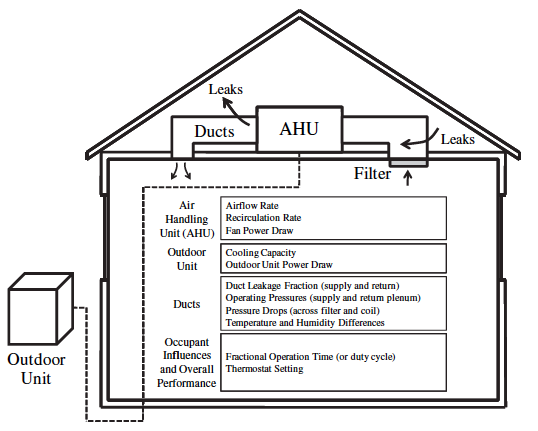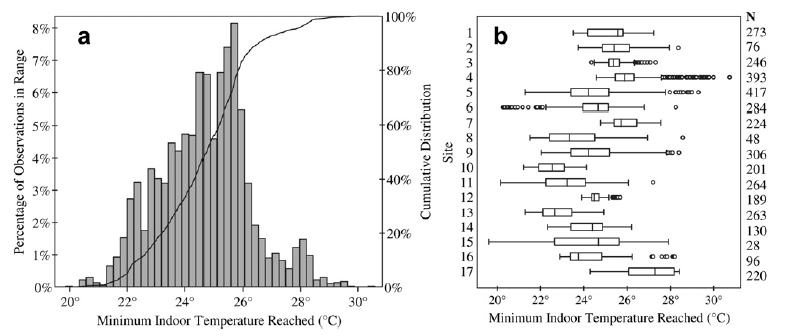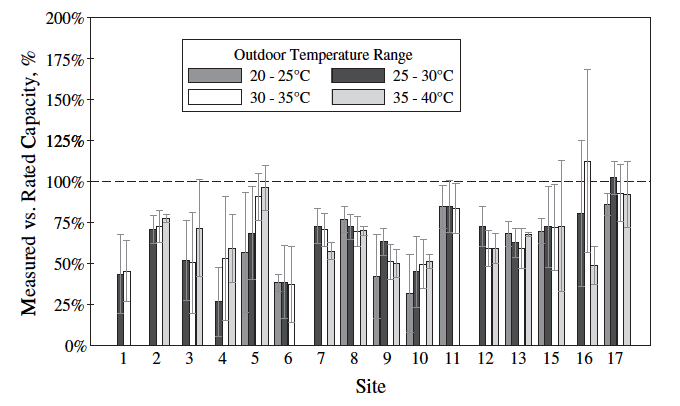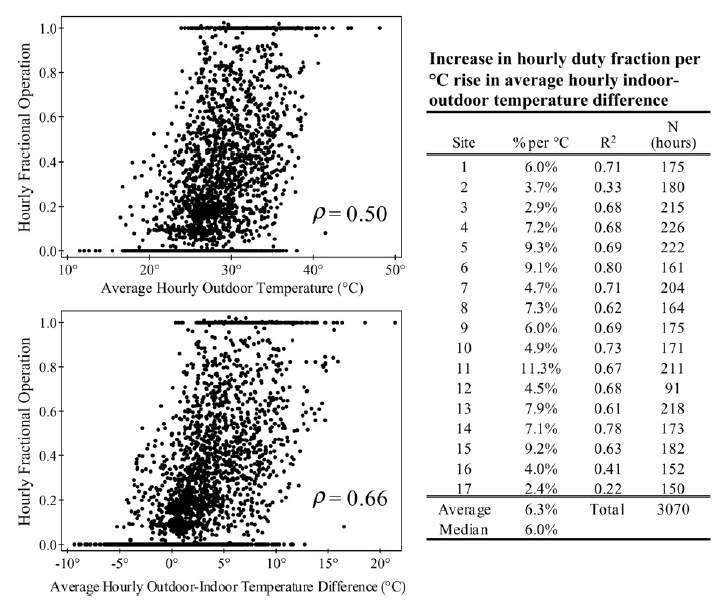HVAC system operational characteristics
Forced-air space-conditioning systems are ubiquitous in U.S. residential and light-commercial buildings, yet gaps exist in our knowledge of how they operate in real environments. This investigation strengthened the knowledge base of smaller air-conditioning systems by characterizing a variety of operational characteristics measured in 17 existing residential and light-commercial air-conditioning systems operating in the cooling mode in Austin, Texas.

Important parameters that affect energy and indoor air quality in typical residential or light-commercial buildings
Some key findings from this study included:
- Measured airflow rates were outside of the range recommended by most manufacturers for almost every system
- Actual measured cooling capacities were less than two-thirds of rated cooling capacities on average:
- Hourly fractional operation times increased approximately 6% for every degree C increase in indoor-outdoor temperature difference:
- And lower mean indoor surrogate thermostat settings and higher supply duct leakage fractions were most associated with longer operation times. See the distribution we measured below

Distribution of minimum indoor temperatures measured at the end of air-conditioning cycles (a surrogate for thermostat settings)
Overall, the operational characteristics and parameters detailed in this study provided insight into the magnitude of the effects of HVAC systems on both energy consumption and indoor air quality (IAQ) in residential and light-commercial buildings. You can use values in this study to help your energy and IAQ modeling.
Read the full paper published in Building and Environment in 2011 here.
Acknowledgements
This work was performed by Brent Stephens while he was a Ph.D. student under the supervision of Dr. Jeffrey Siegel at the University of Texas at Austin. Brent’s contribution was funded in part by the National Science Foundation (IGERT Award DGE 0549428). Data for this work were previously collected as part of research project RP-1299 funded by the American Society of Heating, Refrigerating and Air-Conditioning Engineers (ASHRAE). We thank Federico Noris, who assisted in the collection of these data, as well as Elliott Gall, who provided a careful review.


